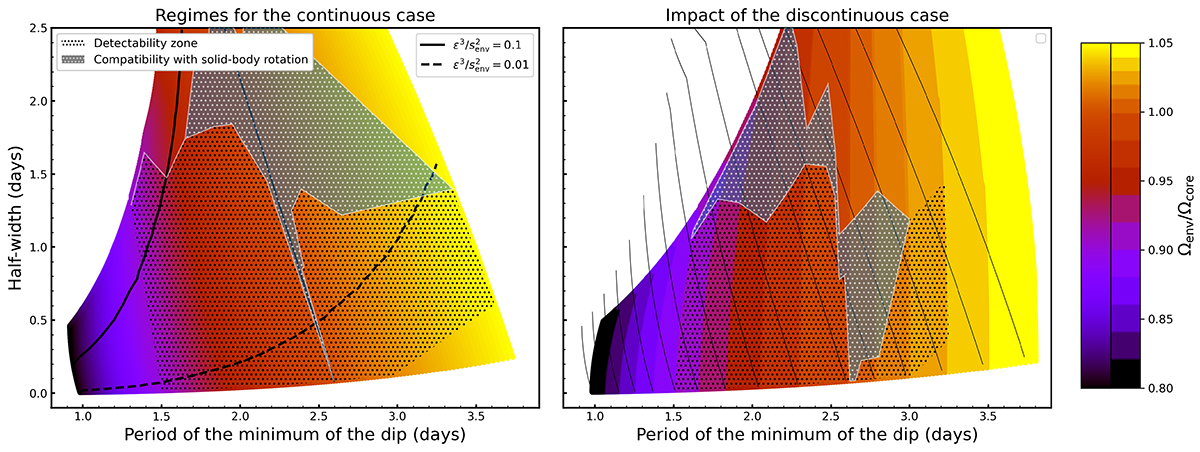Fig. 4.

Download original image
Differential rotation as a function of the period of the minimum of the inertial dip and its half width in the co-rotating frame of the envelope for the model star considered with Π0 = 4175 s and ![]() . Left: Case of a continuous Brunt-Väisälä frequency near the core, with the solid line separating the regions where the core is rotating faster or slower than the envelope. Right: Case of a discontinuous Brunt-Väisälä frequency near the core. The superimposed contour corresponds to the same levels of differential rotation as highlighted on the sequential colour map, for the continuous Brunt-Väisälä case. On each panel, dashed lines correspond to the limit for which ϵ3/senv2 < 0.1 and ϵ3/senv2 < 0.01. In each panel, the dotted regions designate the zones for which differential rotation was found to be detectable in our analysis. Black dots designate zones in which we found dips significantly differing from a solid-body rotating case, whereas the white region shows dips in which the solid-body rotating case cannot be excluded.
. Left: Case of a continuous Brunt-Väisälä frequency near the core, with the solid line separating the regions where the core is rotating faster or slower than the envelope. Right: Case of a discontinuous Brunt-Väisälä frequency near the core. The superimposed contour corresponds to the same levels of differential rotation as highlighted on the sequential colour map, for the continuous Brunt-Väisälä case. On each panel, dashed lines correspond to the limit for which ϵ3/senv2 < 0.1 and ϵ3/senv2 < 0.01. In each panel, the dotted regions designate the zones for which differential rotation was found to be detectable in our analysis. Black dots designate zones in which we found dips significantly differing from a solid-body rotating case, whereas the white region shows dips in which the solid-body rotating case cannot be excluded.
Current usage metrics show cumulative count of Article Views (full-text article views including HTML views, PDF and ePub downloads, according to the available data) and Abstracts Views on Vision4Press platform.
Data correspond to usage on the plateform after 2015. The current usage metrics is available 48-96 hours after online publication and is updated daily on week days.
Initial download of the metrics may take a while.


